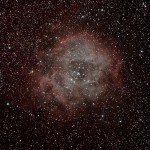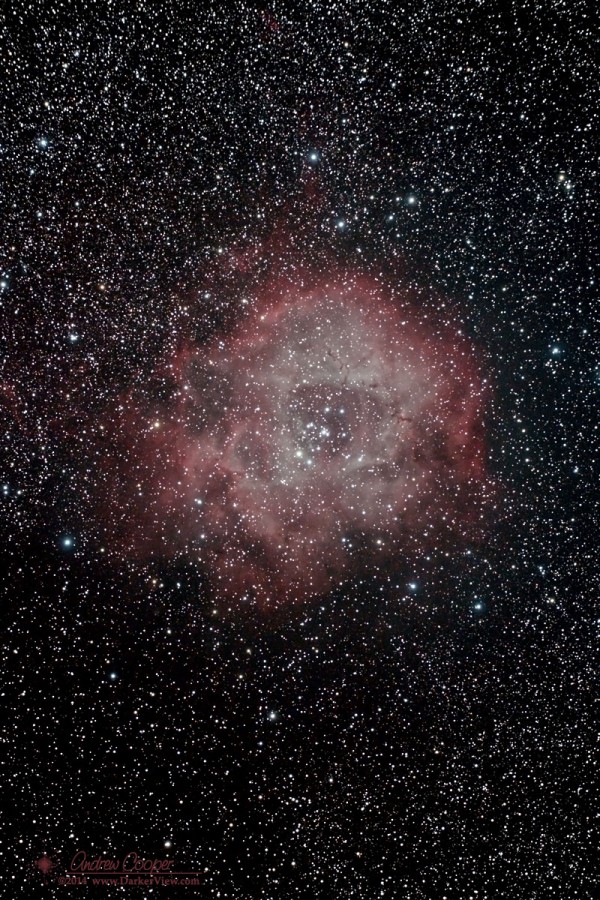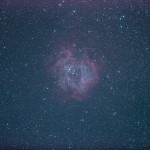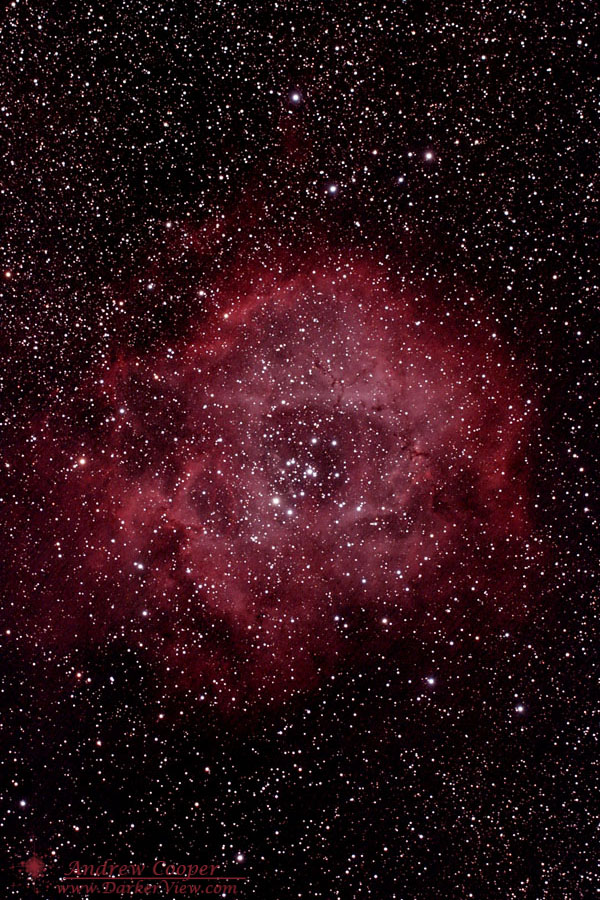For my first pass on the Rosette I used about an hour of data. Ten four minute exposures, ten one minute exposures and ten 15 second exposures. The stack is designed to capture a wide dynamic range by using several different exposure lengths. Multiple images taken at each exposure to reduce the noise inherent in long exposure astrophotgraphy. All of this data is aligned and stacked to produce the final image.

The next night I acquired and shot again, another 24 exposures on the Rosette, another 1.6 hours of exposure. A planned astrophoto outing to the MKVIS at 9,200ft elevation offered a chance to get even more high quality exposures. This time I got 30 more exposures, another two hours of total exposure time.
Combining all 3.8 hours of exposure resulted in a notably nicer image. The noise in the fainter sections of the image is pleasantly reduced. It should be with 54 four minute exposures used.
I need to do some sort of systematic comparison of the data gathered in my driveway versus the data obtained at the MKVIS up on the mountain. Having a series of exposures taken with the same gear, on the same target, and at the same time of night just a few days apart should allow a reasonable comparison. I was unable to expose any longer at the VIS despite the colder temperatures (the camera was about 10°C colder). How much better is the VIS? Can I get data nearly as good without packing up the gear and heading up the mountain?




